There was a magical quality about that first trip up the Bealach na Bà.
The memory of the steep climb giving away to breathtaking views across Wester Ross and Skye is still fresh in the mind of motorcyclist Andy Sanson.
On a beautiful summer’s day, he only saw two other vehicles during the whole 11 miles of the pass.
The drivers courteously allowed him to pass on the single-track road, sending him on his way with a cheery wave.
When he reached the village, he easily found a spot to rest at the Applecross Inn.
Sipping a drink outside, he relaxed and enjoyed the tranquil surroundings.
If you’ve driven the Bealach at the height of summer recently, something about this story might seem a little off.
That’s because it happened in 1994.
And a lot has changed since then.
The Bealach na Bà: The facts
It’s the longest steep hill on any road in the United Kingdom.
It climbs to 2,054ft in just six miles.
Alternately known as the Bealach nam Bo – Gaelic for ‘pass of the cattle’ – it was built in 1822.
Historically, it was used as a drovers road.
In truth, conditions have not changed a whole lot in that time.
Stunning as it is, even Visit Scotland describes it as “not for the faint-hearted” and earlier this year, it was dubbed one of the world’s scariest roads.
Back when Andy and his partner Gill Morley fell in love with it, the route was still a relatively well-kept secret.
It became their place and Andy loved it so much he decided to research its origins and pen an article about it for the Scots magazine.
But when they decided to return more than two decades later, their experience was very different.
By then, the era of the guidebook and the bucket list was well and truly under way.
And the boom of the North Coast 500 sent the road’s popularity stratospheric.
How the road has changed
This time around Andy was tailgated by a boy racer.
And despite dreadful conditions, when he arrived in the village it was rammed.
As someone who comes from Merseyside and has been living in Shropshire for years, Andy is keen to point out that he knows he has no more right to being there than anyone else.
And he will always have the treasured memories of his earlier trips there.
But surrounded by people taking selfies and clogging up the passing places, it feels to him like something has been lost forever.
“Applecross is not what it was,” Andy said. “It’s easy to see the increased popularity as a bad thing.
“I know opinion is divided among those who have lived and worked there for years.
“But it has taken something away from what was, for us, a treasured corner of the world.”
The genie is out of the bottle
The Bealach dominates local discussion.
It’s a regular item on the community council’s agenda and social media tales of idiotic behaviour on it are a dime a dozen through the summer.
There are plenty of different opinions on how it should be managed but one thing people seem to agree on is that it’s never going to go back to the way it used to be.
The genie is out of the bottle.
But is Andy Sanson’s assessment one that is shared locally?
Judith Fish has seen a lot of changes across her 35 years running the Applecross Inn.
The launch of the NC500 in 2016 caused a huge surge in popularity and the increase in domestic tourism caused by the Covid pandemic made things even more extreme.
“I think it will only calm down once everyone has done the route,” she laughed. “It feels like we must be getting close to that by now.
“Everybody who rings up now, it’s their reason for coming. Before it was because this is a beautiful, natural, scenic part of the world.
“Now it’s ‘we’re doing the NC500’ like it’s an achievement.”
It’s stressed by most people living in Applecross that the majority of visitors are well behaved.
But Judith recalls being pushed to the limit recently by a group of 10 muscle car drivers roaring into the Inn’s car park and disrupting the peace of her customers.
‘You can’t turn the clock back’
Gregor Watson has been living in Applecross for 14 years and has worked as a ranger for Highland Council covering the peninsula for the last four.
Experience has taught him that the best way to manage life as a local at the height of the tourist season is to avoid the peak times.
Travelling early in the morning while the tourists have a lie-in is usually the best bet to avoid being caught up in a passing place calamity.
“The NC500 isn’t going away, that’s for sure,” Gregor said.
“It’ll mature the way the Great Ocean Road in Australia or the Wild Atlantic Way in Ireland has.
“It’s on people’s bucket lists and it’s become an iconic destination now.
“You can’t turn the clock back, so it’s about management.”
That isn’t easy.
Although there are advisory road signs saying that the road is not appropriate for motorhomes, there are many who take the risk.
And if two come head-to-head on a single-track road on a steep climb, you’ve got problems.
No reason to cancel the NC500 party
Al Brown runs the village shop in Applecross.
Like many people there, he has his share of horror stories caused by thoughtless tourists.
A few years ago, there was some talk about removing the peninsula from the NC500 signage and marketing to better protect it.
Despite the problems, Al doesn’t want to see that happen.
“I’m a crofter too,” Al said. “And I’ve had people depositing waste on my croft.
“It’s not on. But say if you had a party for 100 people and five of the people were complete idiots.
“Should you cancel the party? I don’t think so.”
That seems to be the recurring theme.
How do you stop the minority ruining it for everyone else?
Even if thousands of people are respectfully passing through every day, it’s the buffoon taking a selfie with their campervan blocking the road that’s generating the online backlash.
Whether things will be different on Andy Sanson’s next journey remains to be seen.
Until proven otherwise, he will still hope for that.
He said: “Nobody would wish to deny anyone the right to drive or ride across the Bealach.
“But please, do a bit of research first.
“Learn how to drive on single-track roads. Recognise that passing places are just that, not somewhere to stop to take selfies, have a picnic or dispose of your waste.
“Time will tell if the damage that has been done is irreversible.
“I hope it’s not.”
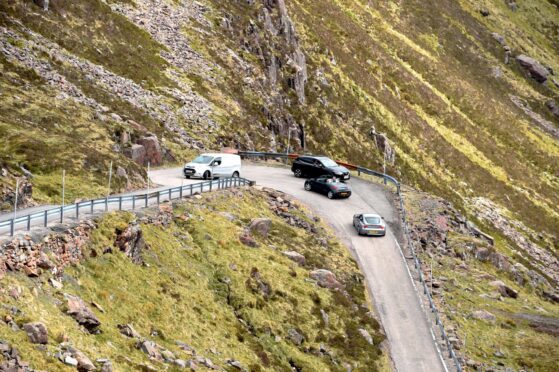
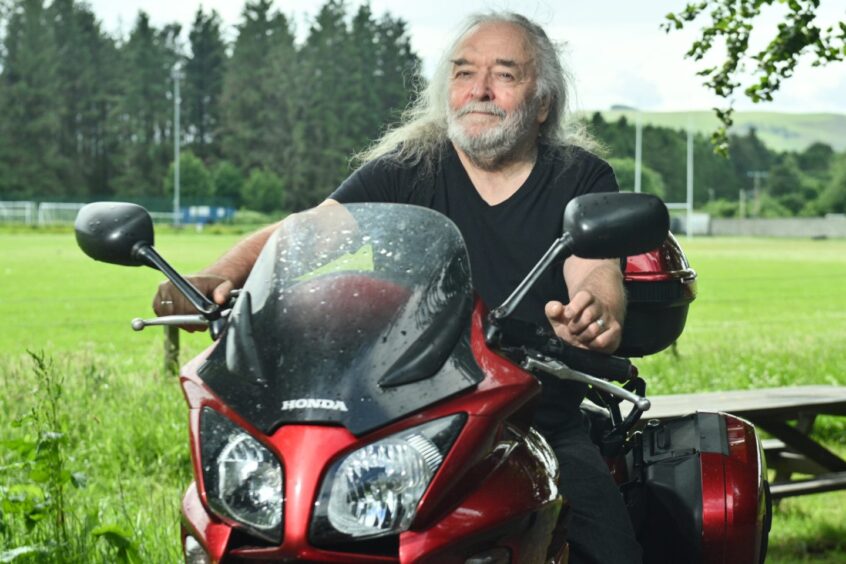
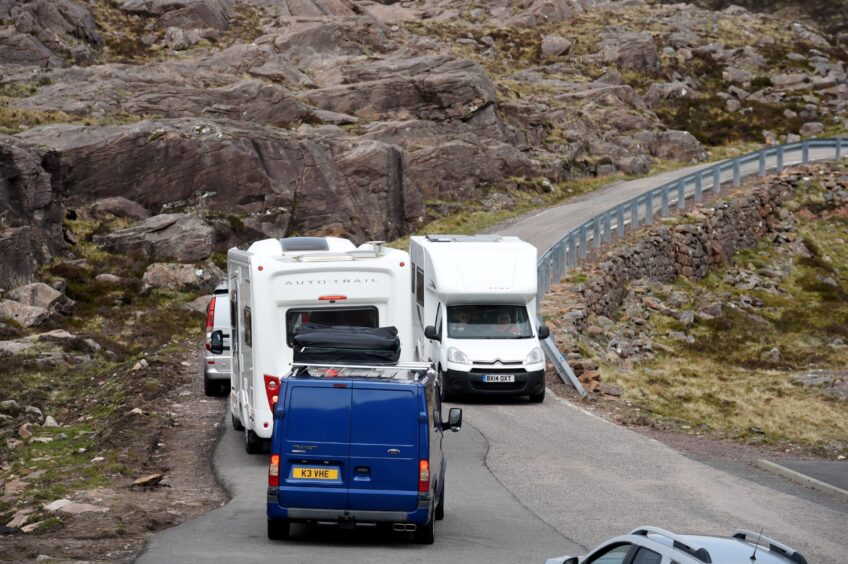
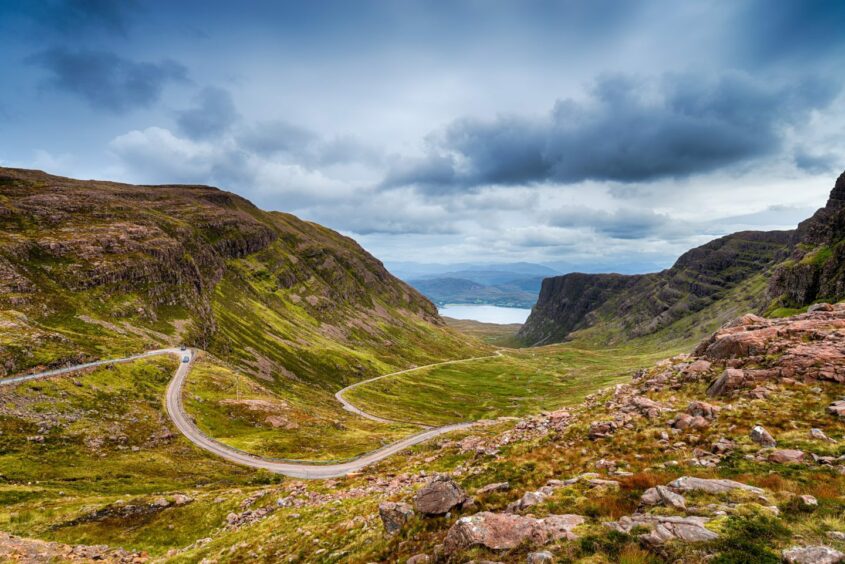

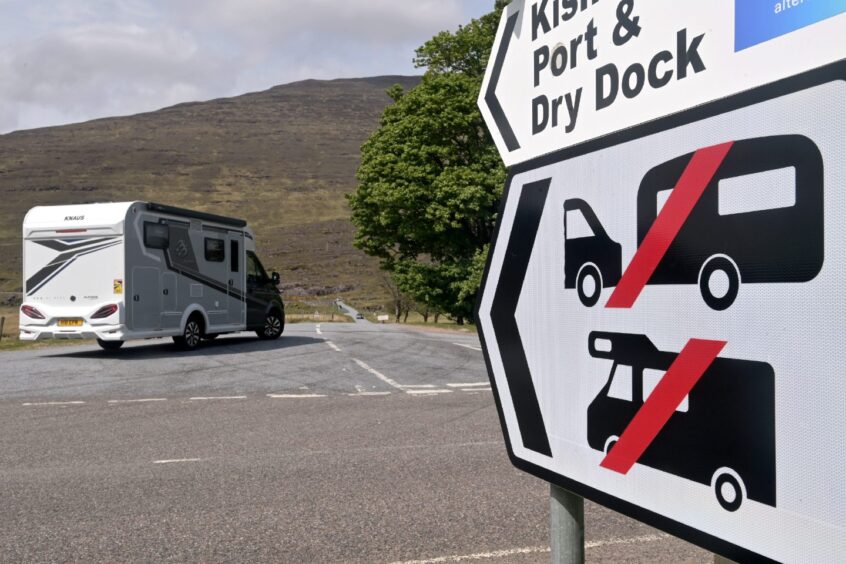
Conversation